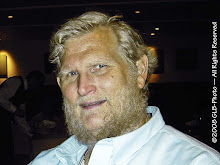What makes one class or program more interesting and motivating than another? As a university professor, I constantly faced the challenge of how to make classes exciting and motivating for my students. A a computer trainer, I was faced by much the same problem with different populations of workers who needed to acquire skill using specific computer programs. Movies, television shows and other group events face not dissimilar problems. Several factors come to mind...
- Content... First of all, some content seems to be more inherently interesting than other content, hence more motivation. In school, classes covering subjects that we like are generally those into which we put more effort. Effort is generally taken as an index of motivation.
- Attraction... Secondly, some content is appealing to the senses. They use visual organizers that attract attention to the salient elements; some auditory sounds (or music) are more pleasing to us than other types. Sensory 'prepotence' is another type of motivation.
- Delivery... Thirdly, some speakers seem to hold an audience attention to their presentation. It may be in the tone of their voices, the slides being used, or the pacing of delivery. It might also involve the timing of breaks. In any case, attention to an effective presentation is motivation
For one thing, we need to understand the nature of attention and how it motivates one to follow a discussion or complete a task. Let's consider a few points. Let's look at what holds our attention and which processes tend to break our attention. For sake of discussion here, let's more or less equate motivation with holding interest; interest is closely linked to attention.
The Nature of the Object... Why do some things seem to have inherent interest and other things don't? Psychologists over the years have found that certain properties of objects seem to have attention-getting built-in — size, color, placement on a page/canvas, tone of voice — all fit this criteria. Most of these have been extensively studied by the Gestalt Psychologists any many of my photographic books roughly equate good composition with many of these elements. Books on good web page design also fit into this schema.
The Activity of the Objects... Why have many web sites included extensive use of animation tools like Flash? Do they make the content easier to use and access? Not necessarily! Then why have we seen a proliferation of animation and video clips on many web sites, especially those related to news agencies (TV and print)? In a word, action seems to have an inherent attention-getting properties. Such animation may take the form of slideshows, advertising banners, and other action-based elements. No doubt much of this has to do with the conditioning current generation have experienced with action TV shows, video games, etc. Action attracts the attention of the viewer, especially those who expect it.
The Timing in the Delivery... We all know that some speakers seem to have our attention more than others. Why are some speakers more effective in holding our attention? I think that the keyword here would be "pacing". The effective speakers know how to vary the tone of their voices, when to change a slide or graphic, when to play a video clip, when to take a break, etc. This pacing holds attention by breaking up a long session into smaller "chuncks". This chuncking is know to produce more effective web pages as well.
So, why don't more people design their presentations or web pages, compose their photographs or other artwork in such a way as to enhance attention? I think that there are probably two factors — lack of preparation and an ignorance of the attention mechanisms in the brain. In the former case, better preparation will produce visuals that are better composed as well as better paced; this leads to more effective presentations and delivery. In the latter case, ignoring the brain's tendency to "habituate", or "turn off" to the material/speech/action that goes on and on. After all, isn't that why movies, plays and books are divided into scenes and chapters?
I have tried to lay out some elements of these attention generating techniques to make my classes and training sessions more motivating. If our audiences doesn't pay attention to what we say, what we write or create or present, they why should we expect them to act any differently? Looking back on the effective speakers, teachers, or professors that I have had, don't we see these principles applied?
Next Week: In the coming weeks I will delve into these topics in more detail, starting with the Gestalt Principles of Visual Organization. Join me in this examination...

No comments:
Post a Comment